At A Glance: Our Top 5 Picks for J.R.R Tolkien Books:
- The Hobbit (1937) – Our Top Pick
- The Lord of the Rings (1954)
- The Silmarillion (1977)
- Unfinished Tales of Númenor and Middle-earth (1980)
- The History of Middle-earth (1983 to 1996)
JRR Tolkien was the first one in his family to attend college. His passion for literature led him to uncover the bedazzling world of myths and legends. Since then, he devoted much of his life and literary work to develop worlds of fantasy that are hard to match to this day.
Wondering about which order should one read JRR Tolkien books is a valid question. This is because Tolkien’s stories are intertwined in a glorious manner.
Another aspect to consider when thinking about Reading JRR Tolkien books in order is that some of his books were actually published posthumously by his son.
However, we’ll put JRR Tolkien’s books in the chronological order of publication so that you have a broader view of his fantasy world. Then, you can shuffle around as you like.
J.R.R Tolkien Books in Order
| IMAGE | PRODUCT | FEATURES | PRICE |
|---|---|---|---|
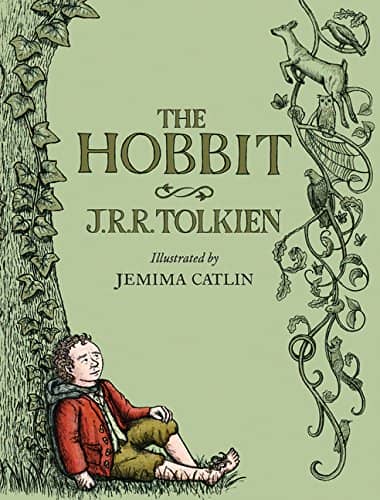 | The Hobbit (1937) | • Formats: Hardcover & Paperback • Hardcover: 384 pages | |
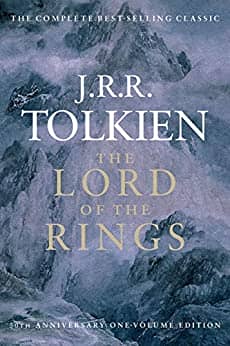 | The Lord of the Rings (1954) | • Formats: Kindle, Audiobook, Hardcover, Paperback & Mass Market Paperback • Print Length: 1209 pages | |
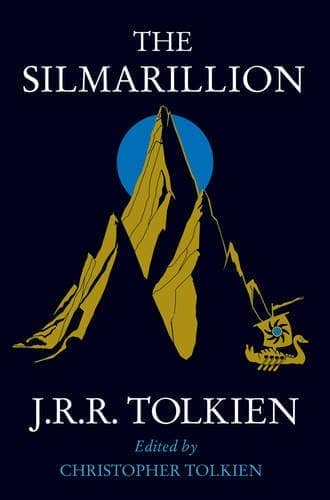 | The Silmarillion (1977) | • Formats: Hardcover, Paperback, Mass Market Paperback,Audio CD & Multimedia CD • Paperback: - | |
 | Unfinished Tales of Númenor and Middle-earth (1980) | • Formats: Kindle, Hardcover, Paperback & Mass Market Paperback • Paperback: 480 pages | |
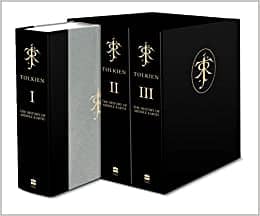 | The History of Middle-earth (1983 to 1996) | • Format: Hardcover • Hardcover: 5392 pages | |
 | Tales from the Perilous Realm (1997) | • Formats: Kindle, Audiobook, Hardcover, Paperback & Audio CD • Listening Length: 7 hours and 42 minutes | |
 | The Children of Húrin (2007) | • Formats: Kindle, Audiobook, Harcover, Paperback & Mass Market Paperback • Mass Market Paperback: 313 pages |
1. The Hobbit (1937)
This widely acclaimed book started as a bedtime story that JRR Tolkien used to tell his kids—with the encouragement of fellow writers back then, such as C.S. Lewis Tolkien decided to take it to print by 1937.
This story can be considered as an introduction to Tolkien’s famous Middle-earth. This is the fictional world that he created and became the never-ending source of events in the Hobbit and later works.
What started off as a kids’ short story was later banned several times. The latest ban was in New Mexico, where it was thought to have satanic themes.
This book tells the story of the Hobbit Bilbo Baggins, who lives in Bag End. Bilbo’s serene life was interrupted by the unwelcomed arrival of Gandalf, the wizard.
Gandalf manages to convince Bilbo to join a group of dwarfs in an adventure where they’ll attempt to recover their stolen treasure.
At first, the other dwarfs were not excited about Bilbo. Nevertheless, the group set out into the unknown, where they met trolls, goblins, and fires.
Later, Bilbo meets Gollum, a creature that carries what seems to be a mysterious ring. He challenges Bilbo to solve some riddles and if Bilbo gets them right, he’ll be shown a way out of a tunnel in which he was trapped.
Throughout this sequence, Bilbo discovers magical powers in the ring that can take him back to the group and save them from other perils. The closer the group comes to the Lost Mountain, the fiercer the obstacles.
2. The Lord of the Rings (1954)
This story complements the Hobbit. When you read this book, you’ll be able to see how far Tolkien has gone with the world and the back story.
Although this book was originally written because people wanted more hobbit stories, it was different in tone when compared to its predecessor. This book was intended for adults more than kids.
Even though it originated from the Hobbit, this story was much larger and more elaborate.
This book takes place in Middle-earth. As the name suggests, it tells the story of the wizard Sauron.
When he was young, Sauron created the One Ring to control the other rings of power. With these indestructible weapons, Sauron will be able to rule over Middle-earth.
The themes and ideas that Tolkien presented in this story have been the subject of much scrutiny.
In this story, Tolkien explores themes that include religion, mythology, and his personal experience during WW1. Also, the book alluded to Tolkien’s opposing opinion about the post-industrialization world.
When The Lord of the Rings was first published, it came out in 3 volumes. This is because the publishers wanted to minimize the risk in case the book was a flop.
Little did they know that The Lord of the Rings will sell more than 150 million copies throughout the course of the following years.
3. The Silmarillion (1977)
The Silmarillion is famously dubbed as Tolkien’s first book and also his last. Many of the stories available in Unfinished Tales found their way back in The Silmarillion.
This book might be Tolkien’s dearest project. This is where he had put his mythological themes, fiction, and archetypes under the same cover.
Throughout Tolkien’s writing journey, he tried to publish the Silmarillion but to no avail. The publishers kept dismissing it and asking for more story-based content.
Therefore, The Silmarillion has only seen the light after Tolkien’s death when it was edited and published by his son.
The Silmarillion comprises 5 parts, which explores the universe of Eä. This term means “the World that Is”.
The first part takes us back to when the universe of Eä was created. The second part talks about the powers and energies within that universe.
After these 2 introductory parts, Tolkien tells us the history and events that took place during the first age of that universe in the third part. He also tells us about the wars over the Silmarils jewels.
He continues that trend in the fourth and fifth parts, where he recounts the history of Numenor and the events that took place in the second and third ages.
The Silmarillion requires the reader to be previously acquainted with Tolkien’s world and background story. Therefore, it shouldn’t be your first choice if you’re still starting off with Tolkien.
4. Unfinished Tales of Númenor and Middle-earth (1980)
This is a must-read for those who enjoyed The Lord of the Rings. This collection of short stories was edited and published by Tolkien’s son after his death.
The tales expand on existing parts in The Lord of the Rings, bringing back many favorable characters such as Gandalf.
The tone and feel of Unfinished Tales mirror that of The Lord of the Rings. In this book, Tolkien took the opportunity to delve into more details and background stories of his world.
Nevertheless, the book is rich in emotional and humane moments. It focused on exploring the human psyche and how it reacts to the outer world.
This literary work proved that Tolkien’s stories and style were still in demand even long after his death. Many people argue that The Unfinished Tales include some of Tolkien’s best writing.
The success of this book encouraged his son to publish the 12-volume series of The History of Middle-earth. This brought together all the material put by Tolkien about his elaborate mystical world.
5. The History of Middle-earth (1983 to 1996)
The History of Middle-earth is one of the largest books of literary archeology. As we mentioned before, it was put together by Tolkien’s son in 12 volumes. It brings together material written between 1983 and 1996.
The first 5 parts discuss the beginning of the history of The Silmarillion. The following 4 parts talk about The Lord of the Rings, how it came to life, and the early versions of many events that you can’t find in the series itself.
Later parts dive deep into different aspects of the Silmarillion: how the different ages connect, and how the Silmarillion links with The Lord of the Rings.
One should not mistake this book for a chronological statement about Middle-earth. But rather, it’s a journey inside Tolkien’s creative thinking while creating this world of his.
It’s rich in details, descriptions, and ideas. Although the long passages aren’t for everyone to enjoy, Tolkien’s language makes the words come to life in a way you can’t really see in other fantasy books.
It’s interesting to know that Tolkien’s son had decided not to include anything related to The Hobbit in this book. He thought that this tale didn’t belong to this mythology, but rather, it was his bedtime story.
However, later on, a separate book was dedicated to The History of The Hobbit.
The more you read into creative world-building, the more you realize Tolkien’s great influence on modern literature.
6. Tales from the Perilous Realm (1997)
Tolkien’s stories are considered mythology. This is why they remain famous. It’s because readers interact with them on many levels, both consciously and unconsciously.
Being an English professor had made him an expert on that matter. However, not all of Tolkien’s work took place in Middle-earth.
Tales from the Perilous Realm is a compilation of some short stories and poems written by Tolkien, some of which were published previously in other books.
The Harper Collins edition includes the following:
● Farmer Giles of Ham, a short story about a fight between a farmer and a dragon
● Smith of Wootton Major, a story about a cook who has to create a special cake for the feast of good children
● Leaf by Niggle, a short story about Niggle, who is thought to reflect Tolkien’s anxieties as a writer
● Lecture and essay titled “On Fairy-Stories”
7. The Children of Húrin (2007)
Although this book was started in the 1910s, it was first published almost a century later. Like some of Tolkien’s other works, it was the son’s efforts that brought this book to life.
This book is one of the 3 great tales that took place in the first age. You can find more about them in the Silmarillion.
The backstory is about Morgoth, the antagonist, telling how he escaped imprisonment with his supernatural powers.
Later, he tries to gain control over Middle-earth, resulting in a war with the immortal race of the Elves.
Fast forward, the book continues with the story of the descendants of the “Men” who rebelled against Morgoth and therefore suffered from his curse.
Hurin, a Man, had a son named Turin. In the past, Hurin was a prisoner of Morgoth following the battle of Unnumbered Tears.
Turin was sent to live in the lands of the Elves, Doriath. Following an accident, Turin had to escape this place.
Meanwhile, Turin manages to grow a gang of his own and become their leader. His life becomes full of ups and downs until he learns about his sister and mother being in Doriath.
The turmoil stands against the family trying to reunite and the story ends tragically.
Other Works
The fact that Tolkien’s works were always intertwined and rich in background stories has made his legacy a gift that keeps on giving.
This is why we still see new editions of books written initially by Tolkien but edited by others; most notably, his son.
Moreover, Tolkien’s creative mind gave birth to other literary forms beyond Middle-earth and its stories. He wrote poetry, essays, short stories, and novellas.
It’s important to note that many of these literary pieces can be found in multiple books under different titles.
For example, the novella “Smith of Wootton Major” was published as a standalone book in addition to being part of Tales from the Perilous Realm.
In this section, we’ll walk you through the other books JRR Tolkien is famous for.
● The Adventures of Tom Bombadil: a collection of poetry featuring Tom Bombadil, a character found in The Lord of the Rings.
● Farmer Giles of Ham: A comic fable written in 1937. It’s a story about a farmer who meets a dragon and together they rise to power.
● Smith of Wootton Major: a novella published in 1967. It’s about a cook who makes a cake for the Feast of Good Children.
● Roverandom: another novella by Tolkien, written in 1925. It’s about the adventures of a dog that was transformed into a toy by a wizard.
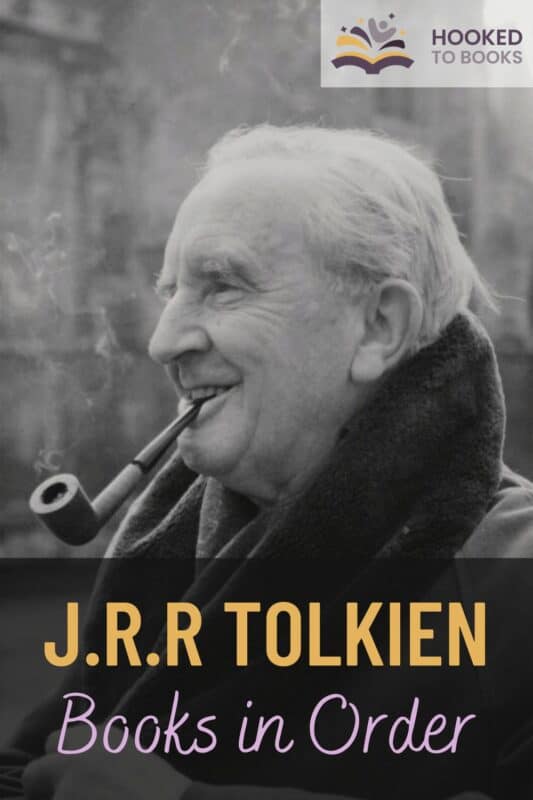
Conclusion
Many people believe that Tolkien’s ability to create worlds remains superior to any other writer. There are always new things to figure out and characters to explore.
Some of Tolkien’s works were adapted to other forms of media, whether radio or film. While achieving great success, many people argue that no film can capture the grandiosity of Tolkien’s imagination.
Although his worlds might seem complicated, Tolkien’s genius comes from his ability to deliver his thoughts in the simplest manner and language.
Being an English professor has helped him in employing his knowledge into his stories with a creative choice of words.
Put all these qualities together and the result will be a great writer whose life was one great endless dream into a world of his own creation.
Share with us in the comments, what book of JRR Tolkien did you like the most?










